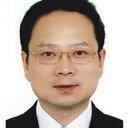[Comparison of eleven active components in Lonicerae Japonicae Flos,Lonicerae Japonicae Caulis and leaves of Lonicero japonica by UPLC].
Mots clés
Abstrait
This present study aims to establish a UPLC method for simultaneously determining eleven components such as new chlorogenic acid,chlorogenic acid,caffeic acid,cryptochlorogenic acid,artichoke,isochlorogenic acid A,isochlorogenic acid B,isochlorogenic acid C,rutin,hibisin and loganin in Lonicerae Japonicae Flos,Lonicerae Japonicae Caulis and leaves of Lonicera japonica and comparing the differences in the contents of phenolic acids,flavonoids and iridoid glycosides of Lonicerae Japonicae Flos,Lonicerae Japonicae Caulis and leaves of Lonicera japonica.The method was carried out on an ACQUITY UPLC BEH C18column(2.1 mm×100 mm,1.7 μm) by a gradient elution using acetonitrile and 0.1% phosphoric acid.The flow rate was 0.3 mL·min-1.The column temperature was maintained at 30 ℃.The sample room temperature was 8 ℃.The wavelength was set at 326 nm for new chlorogenic acid,chlorogenic acid,caffeic acid,cryptochlorogenic acid,artichoke,isochlorogenic acid A,isochlorogenic acid B and isochlorogenic acid C,352 nm for rutin and lignin,and 238 nm for loganin.The injection volume was 1 μL.The eleven components has good resolution and was separated to baseline.Each component had a wide linear range and a good linear relationship(r≥0.999 6),the average recovery rate(n=9) was 98.96%,100.7%,97.24%,97.06%,99.53%,96.78%,98.12%,95.20%,95.12%,100.2%,98.61%and with RSD was 2.5%,1.4%,1.9%,2.1%,1.7%,1.9%,1.6%,2.0%,1.4%,2.2%,2.0%,respectively.Based on the results of the content determination,the chemometric methods such as cluster analysis and principal component analysis were used to compare the Lonicerae Japonicae Flos,Lonicerae Japonicae Caulis and leaves of Lonicera japonica.The results showed that Lonicerae Japonicae Flos and leaves of Lonicera japonica were similar in the chemical constituents,but both showed chemical constituents difference compored to Lonicerae Japonicae Caulis.The established multi-component quantitative analysis method can provide a reference for the quality control of Lonicerae Japonicae Flos,Lonicerae Japonicae Caulis and leaves of Lonicera japonica.


